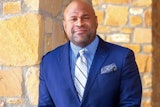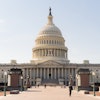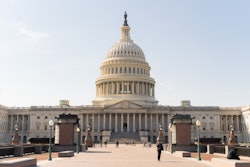A Presidential Class Matriculates
As veteran leaders step down, Black leadership pipeline flows with emerging talent
By Ronald Roach and Linda Meggett Brown
It can be said that Blacks in the academic leadership pipeline are getting notable attention in 2001 in light of recent high-profile presidential appointments at both predominantly White colleges and universities and historically Black institutions. And presidential searches by predominantly Black schools such as, Florida A&M University, University of the District of Columbia, Tougaloo College and Voorhees College, will continue to generate even more examination of rising stars among Black academic leaders.
“There’s considerable Black leadership talent in (American) higher education,” says Dr. Yolanda Moses, president of the American Association of Higher Education (AAHE).
Late last year, the appointment of Dr. Ruth
Simmons as president of Brown University, the first African American named to head an Ivy League school, took the academic world by storm. While representing something of a milestone for Black leadership in higher education, the appointment confirms that it’s possible for elite, predominantly White schools, such as Brown, to be as serious about diversity in its leadership as it is among its students and faculty, according to Moses.
“(Simmons) is a seasoned president,” Moses says. Simmons previously was president of Smith College in Northhampton, Mass. In the early 1990s, she served as provost at Spelman College in Atlanta.
In addition to Simmons, two veterans of historically Black institutions garnered presidential appointments at predominantly White schools, another rare accomplishment among Blacks in the academic leadership ranks. Dr. Antoine M. Garibaldi, a former provost at Howard and Xavier universities, was named president of Gannon University, a predominantly White Catholic institution in Erie, Pa. Dr. Rodney Smith, formerly a vice-president at Hampton University, is taking over Ramapo College, a 5,200 student state-supported liberal arts school in New Jersey on July 1.
While hailing the appointments, observers say they represent exceptional moves by the respective institutions because it is believed that Blacks from historically Black schools are not really considered to be in the same presidential leadership pool as Whites and the few minorities whose careers have been based at predominantly White schools.
“When you look at the fact that there have been so few presidential appointments of Blacks from historically Black schools at White schools, you have to see that as an unwillingness by these institutions to take Black college leadership seriously,” says Dr. William B. Harvey, vice president and director of the office of minorities in higher education at the American Council on Education in Washington.
Harvey says higher education, despite the recent appointments of Smith and Garibaldi, has failed by and large to place Black leaders from Black schools in the same leadership pool for the rest of higher education. In comparison, Blacks who have spent their careers in predominantly White schools and institutions more often become presidents of historically Black schools, according to Harvey.
“Ostensibly, the leaders of Black institutions are developing the same skill sets as Whites who run predominantly White institutions,” he says.
TWO-TRACK SYSTEM?
The existence of a two-track leadership system for ambitious Blacks in higher education — one for Black schools and another for predominantly White schools — is very much alive, according to a number of observers.
When predominantly White institutions consider minority candidates for leadership positions, the candidates tend to have spent their careers at majority White institutions, according to Dr. Lee Jones, assistant dean of the school of education at Florida State University in Tallahassee.
Jones, who has expressed interest in becoming a college president, says this dual-track system seriously limits the leadership options of Blacks who have established their careers at historically Black institutions.
“Unfortunately, the impression I get is that trustees at majority White institutions do not look favorably upon Black administrators that come from HBCUs,” Jones says.
On the other hand, Black institutions, which have historically placed a premium on Black talent, will evaluate presidential candidates who have built careers at White schools, Black schools or have had a mix of both. For example, Dr. Carolynn Reid-Wallace, who was named president of historically Black Fisk University last month, has had stints with Bowie State University, the U.S. Department of Education and the City University of New York.
Dr. George Ayers, president of the Arlington, Va.-based academic search and consulting firm Ayers and Associates, has directed his company to develop leadership programs and opportunities for Black college leaders that would put them into the pool of presidential candidates for all higher education institutions rather than strictly for Black schools. A former president of Chicago State University in the 1980s, Ayers ran a program in the early 1990s for the Kellogg Foundation that identified and trained promising Black college leaders for leadership positions at large in higher education.
“The pipeline needs to be strengthened,” he says.
Ayers cites Garibaldi as a Black college veteran who has made considerable effort to put himself in the broadest pool of presidential candidates possible by getting active with organizations such as AAHE and the Educational Testing Service.
Ramapo’s Smith says that while at Hampton he was quite cognizant of the conventional wisdom that Black college officials virtually never ascended to the leadership of predominantly White schools.
“If you read the literature and listened to all the talk about the Black leadership experience, it was quite discouraging,” Smith says.
Nevertheless, Smith forged ahead and sought presidencies at both historically Black and majority White schools. He feels he benefited in part by the reputation of Hampton president Dr. William R. Harvey who’s nationally known to groom his administrators for college presidencies. Smith notes that he’s the eighth administrator under Harvey to leave Hampton to become a college president.
“I was more interested in whether the mission of the school and its goals were in line with my interests rather than whether it was a historically Black or predominantly White institution,” Smith says.
SETTING PRIORITIES AT HBCUs
Among the historically Black colleges searching for a new president, technology and fund raising have been the common denominators of challenges facing the leaders who will take the helm. Finding a way to strengthen and refine telecommunications technology is probably one of the greatest challenges, says Reid-Wallace, the newly appointed president of Fisk University in Nashville, Tenn. Succeeding Dr. John L. Smith Jr., Reid-Wallace is the first female president in Fisk’s 135-year history.
Reid-Wallace notes that she and her colleagues must develop a very strong strategic plan that looks realistically at what exists now and where you want to go, almost like signs on the road. It’s the signpost that has to be there in the planning documents, she says.
“A carefully crafted strategic plan that cannot be written by the university president. A strategic plan brings in the mission statement, and at Fisk, the mission is we want to be an excellent national liberal arts college. Everything in the strategic plan relates to that,” she says.
College presidents in this century must have a strong, energized faculty that can articulate the goals and carry them out and a supportive board of trustees that won’t micromanage, but will support the administration and faculty, according to Reid-Wallace.
Diversity is also an important issue. Reid-Wallace says Fisk will try to find a way to diversify the student population, but at the same time will be careful not to lose that part of the university that makes it unique. “Our goal is pretty clear, to provide a diverse multicultural community. What I certainly will be looking for is, not a formula, it’s too close to quota, to diversify by race and ethnicity but also age,” she says.
Like other schools, Fisk will look for students from other countries, housewives and mothers who have sent their kids off to college.
And in addition to finding resources to fund various projects, carrying out the mission of the university and working to improve the overall efficiency of the institution, Reid-Wallace says part of her job is to look for new talent and bring in the best faculty for the university. As the faculty is graying, many having taught at the institution for 30 to 35 years, Reid-Wallace says her challenge is to “replace them with high quality people who will bring to Fisk that same passion and commitment.”
HBCUS SEEK TOP-NOTCH TALENT
What the University of the District of Columbia needs is a true 21st century president who has a commitment to land-grant institutions, says Charles Ogletree, chair of the Board of Trustees and a professor at Harvard Law School.
As outgoing president Dr. Julius F. Nimmons Jr. steps down later this month, Ogletree says the new president will have to meet the challenges of integrating technology and preparing students for the workplace and community service. The new president’s goal also must be substantial fund raising.
“The president must foster a good relationship with local government, and at the national level, with Congress and the White House,” Ogletree says.
The board has increased the salary to coincide with the job’s higher expectations, he says.
“Technology is the first challenge,” he says. “The new president must be a visionary and someone familiar with cutting-edge technology and (have) a commitment to historically Black and land-grant institutions.”
Florida A&M University finds itself in a unique situation that will make the new president’s job extraordinary. Beginning July 1, the school will have a new Board of Trustees to make major decisions for the institution. The Board of Regents will no longer govern the institution.
This is a major change for the institution because the board members have not been appointed. Outgoing president Dr. Fred Humphries has been contracted to stay on until August after board members have been appointed. No search will begin until the new trustees are in place, says Sharon Saunders, interim associate vice president of university relations. The new president will have a new neophyte board, she added.
The new president also will have to resolve the issue of the joint FAMU/ Florida State University engineering program that will be impacted when the Board of Regents system is abolished, Saunders says. And the new person will have to contend with hiring a new provost.
FAMU wants to position itself to become a research institution. To achieve this goal, the new president must lead the institution, adding 10 new doctoral programs to the curriculum during the next 10 years to move the university forward. The state approved a center of excellence in science and math that will allow FAMU to add the programs, Saunders says.
Meanwhile, the Voorhees College Board of Trustees in Denmark, S.C., is near the end of its five-month search to find a successor for outgoing president Dr. Leonard E. Dawson, who is retiring after more than 15 years.
“What we need at Voorhees is a fund-raiser — that looms high on our list. Procurement for private colleges is essential to the well-being of schools. We need funds from the private corporate sector,” says Marshall Bass, board chairman.
Strengthening the quality and quantity of students is also an issue. “The school must achieve a higher level of diversity in our student population with a national and international representation,” Bass says.
“We’re looking for a strong manager, an individual who can create an environment where other competent people can and will perform,” he says. “I would think that we are seeking an individual who can identify with the Episcopal Church on a national and international basis. Someone who can be a strong advocate for the church which our school is identified with.”
Bass stopped short of saying the president has to be Episcopalian because the current president and his predecessors were not members of that denomination. The Voorhees board was expected to have a successor named by the end of June. Whoever leads the institution in the next decade must have a high degree of energy, creativity, integrity and the ability to define a vision and produce high-quality graduates, Bass says.
“These characteristics describe an effective leader, and that’s what the board is looking for,” he says.
© Copyright 2005 by DiverseEducation.com















